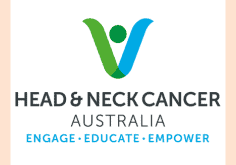What’s new – July 2024
What’s new in July, with links to support, information and other items of interest.
- Free webinar: Lymphoedema & Head and Neck Cancer
- July is Sarcoma Awareness Month
- Free support group for partners of women with metastatic breast cancer
- July is Head and Neck Cancer Awareness Month
- Study: Support factors and wellbeing for people with cancer and their carers
- The Oncology Network
Free webinar: Lymphoedema & Head and Neck Cancer

Head and Neck Cancer Australia are holding a webinar about head and neck lymphoedema. Join Guest Speaker, Dr Amanda Pigott on Thursday 1 August at 12pm to learn why head and neck lymphoedema occurs, how it can affect people and how it can be managed. If you are a patient experiencing lymphoedema and would like to join our panel to share your experience, contact Head and Neck Cancer Australia via email: [email protected].
Register for the free Head and Neck Cancer Australia webinar.
July is Sarcoma Awareness Month

Sarcoma is the term given to a broad group of cancers that can start in the bones and soft tissue. They can form anywhere in the body and at any age and are often misdiagnosed. The Australia and New Zealand Sarcoma Association (ANZSA) is the peak body for the sarcoma community. ANZSA seeks to improve outcomes for sarcoma patients through research, education and awareness.
To find out more about sarcoma, to locate a sarcoma specialist or to read stories from others with sarcoma visit the ANZSA website.
Free support group for partners of women with metastatic breast cancer

Did you know that Thursday Girls (weekly support group for women with metastatic breast cancer) runs a free partners group? Each session is led by qualified Facilitator, Sue Fisher and takes place twice a month. These sessions are an opportunity for partners to express their thoughts, feelings and share experiences with others who are in similar situations. This video on YouTube provides a great insight into how the sessions are run and the connections that are made as a result.
To learn more or express your interest in joining the group email [email protected]
July is Head and Neck Cancer Awareness Month

Head and neck cancers occur in the mouth, throat, nose, sinuses, salivary glands, and other areas of the head and neck. Symptoms differ depending on where the cancer is occurring, however common symptoms include a sore lump that won’t heal, a persistent sore throat, enlarged lymph nodes, trouble swallowing and breathing. Some treatments can impact speech and cause mouth sores.
To learn more about these cancers and where to access support visit our blog post.
Study: Support factors and wellbeing for people with cancer and their carers

Researchers from Flinders University working with Cancer Council SA want to know about support factors that impact on wellbeing for people with cancer and cancer caregivers.
If you have ever been diagnosed with cancer or a caregiver for a person with cancer, you are invited to take part in a 20-minute survey.
The survey will ask you about background circumstances, ways you access and use health information, social support and wellbeing.
Learn more and take the survey on this Flinders University website.
The Oncology Network

The Oncology Network is a free online resource for health professionals. The platform provides access to exclusive commentary from key opinion leaders, clinicians, researchers and organisations. You’ll find over 80 podcast episodes spread over 6 topics including Women in global oncology. You can sign up to the oncology newsletter which is sent once a week and features news stories you won’t read anywhere else. The site also provides information on oncology meetings, jobs available and more.
Read all the details and sign up to gain access to this information via the Oncology Network website.






